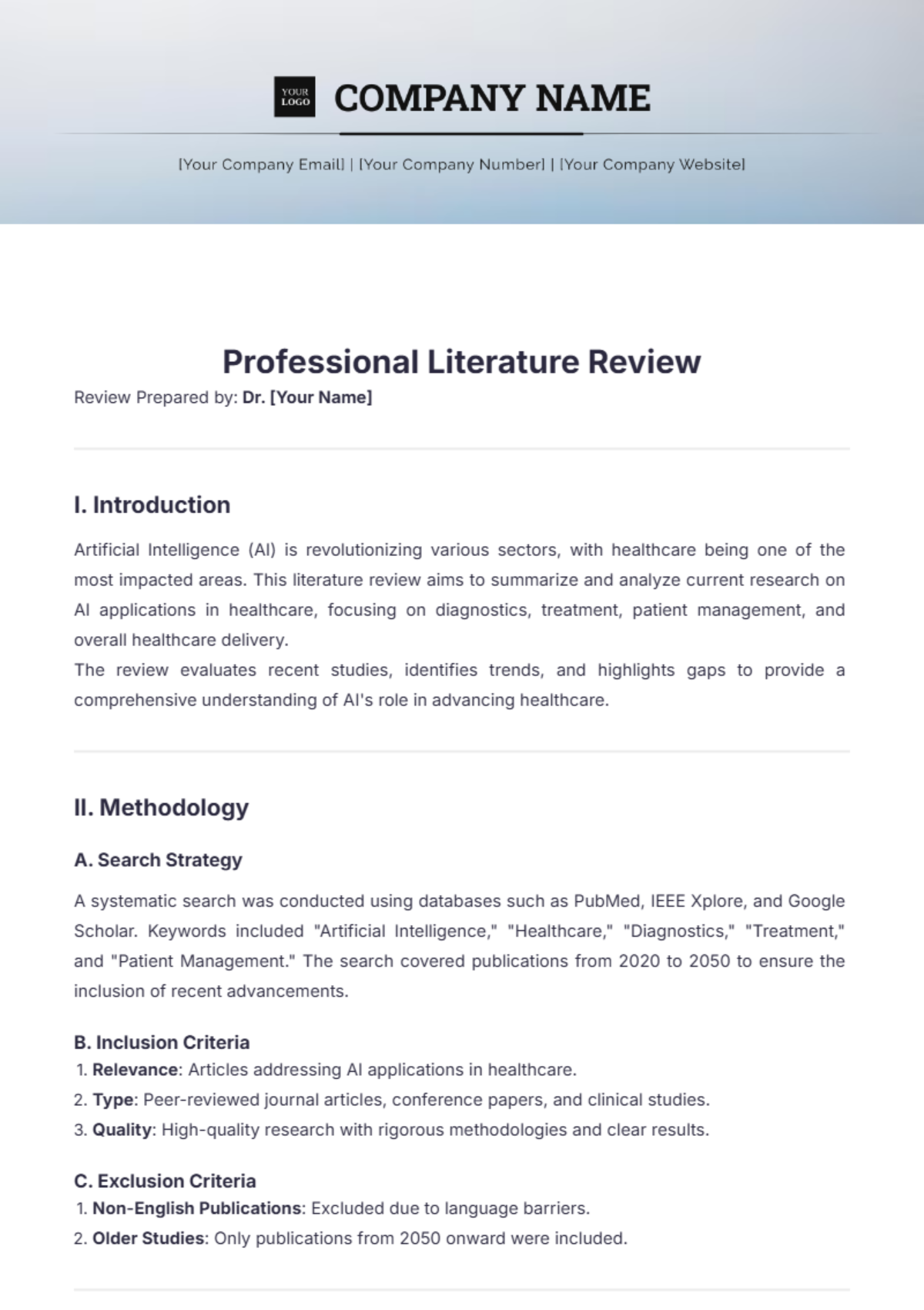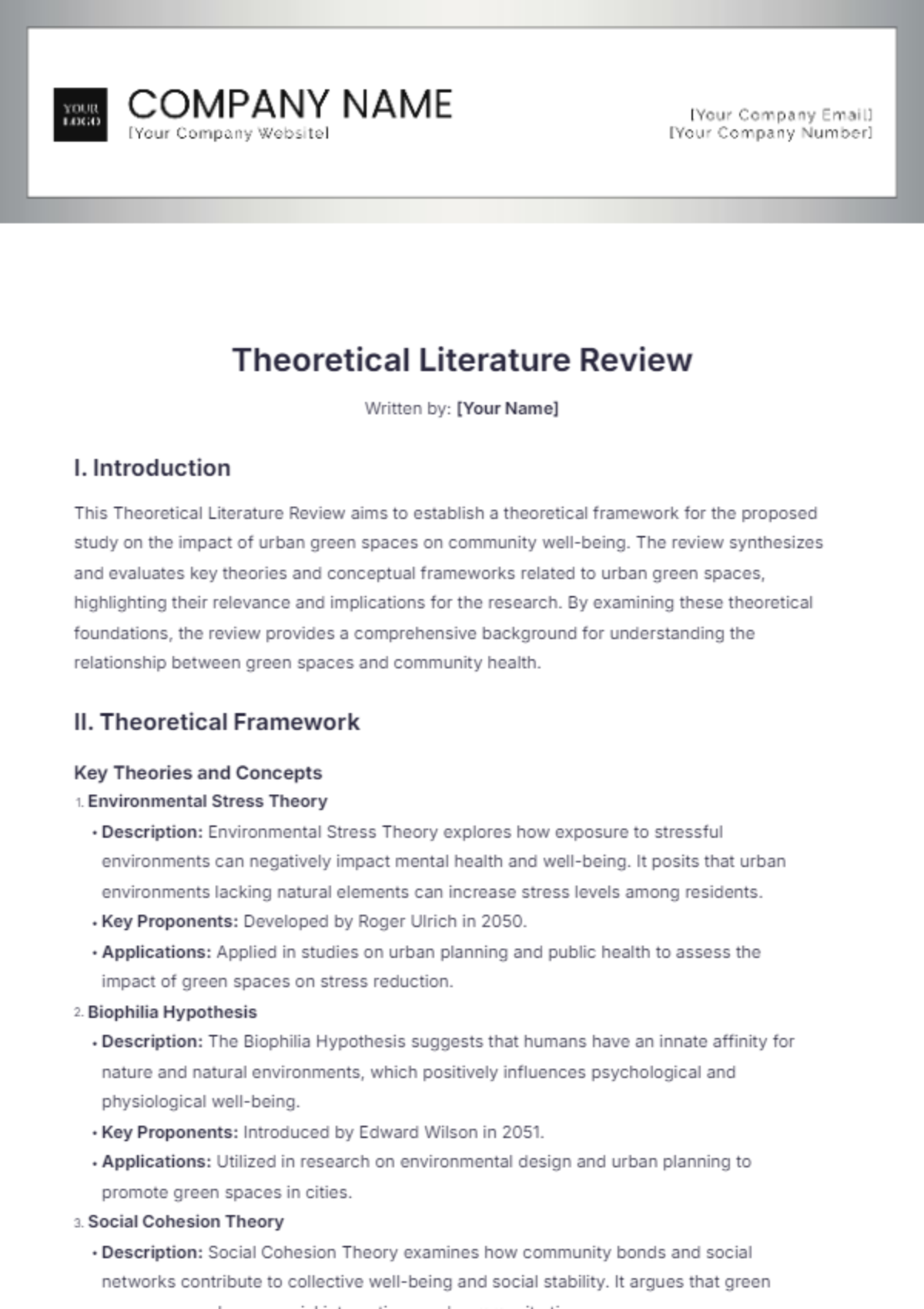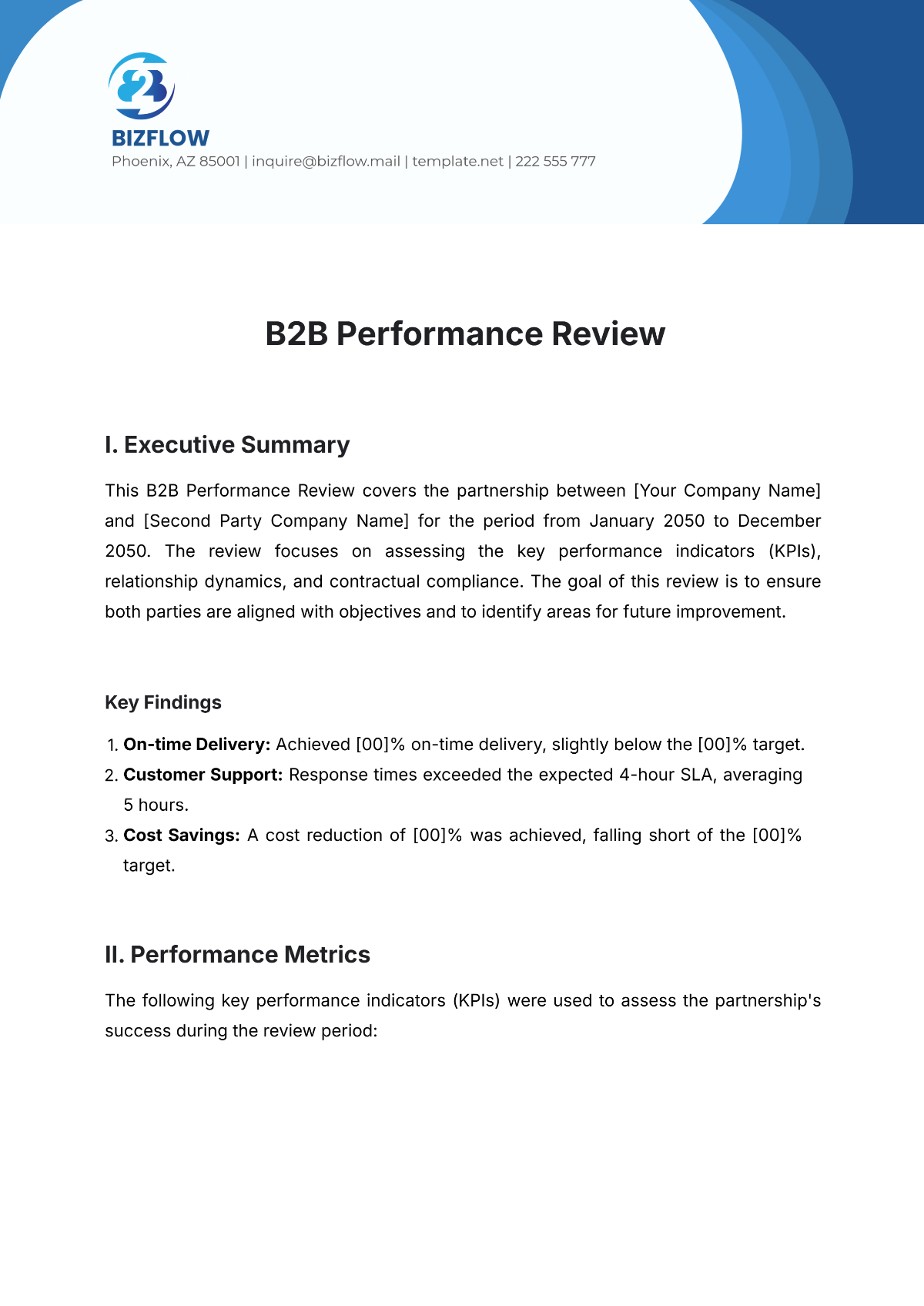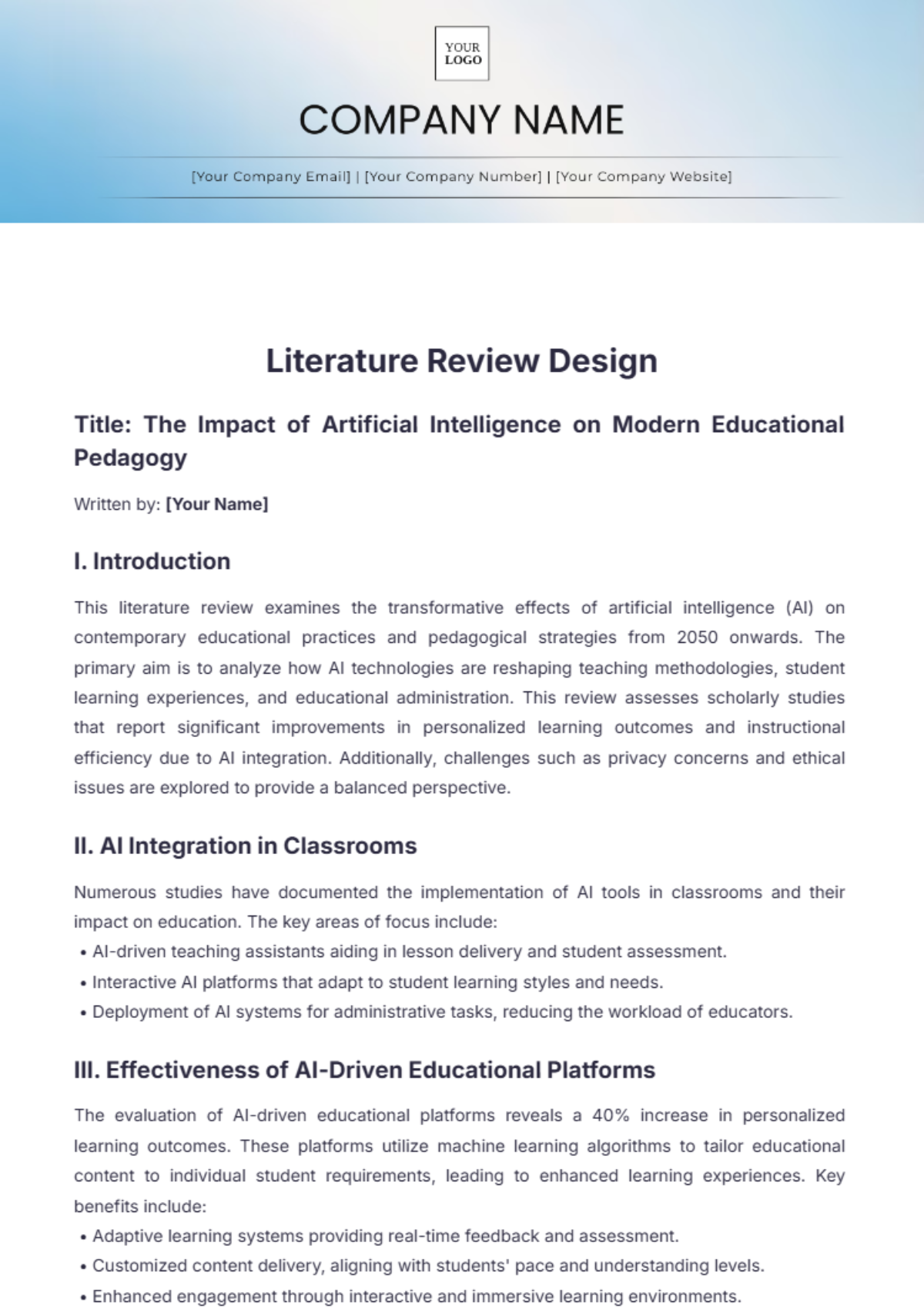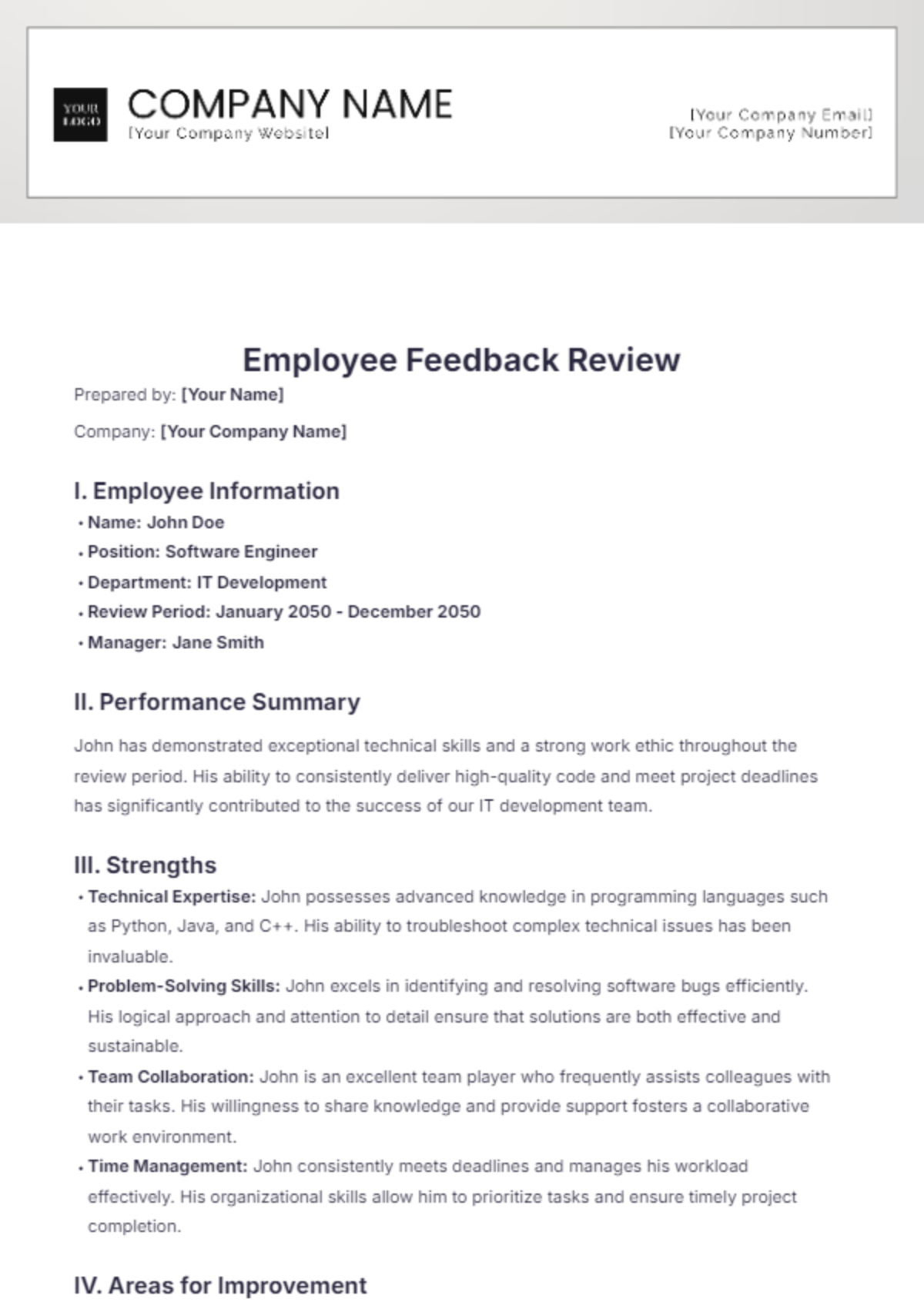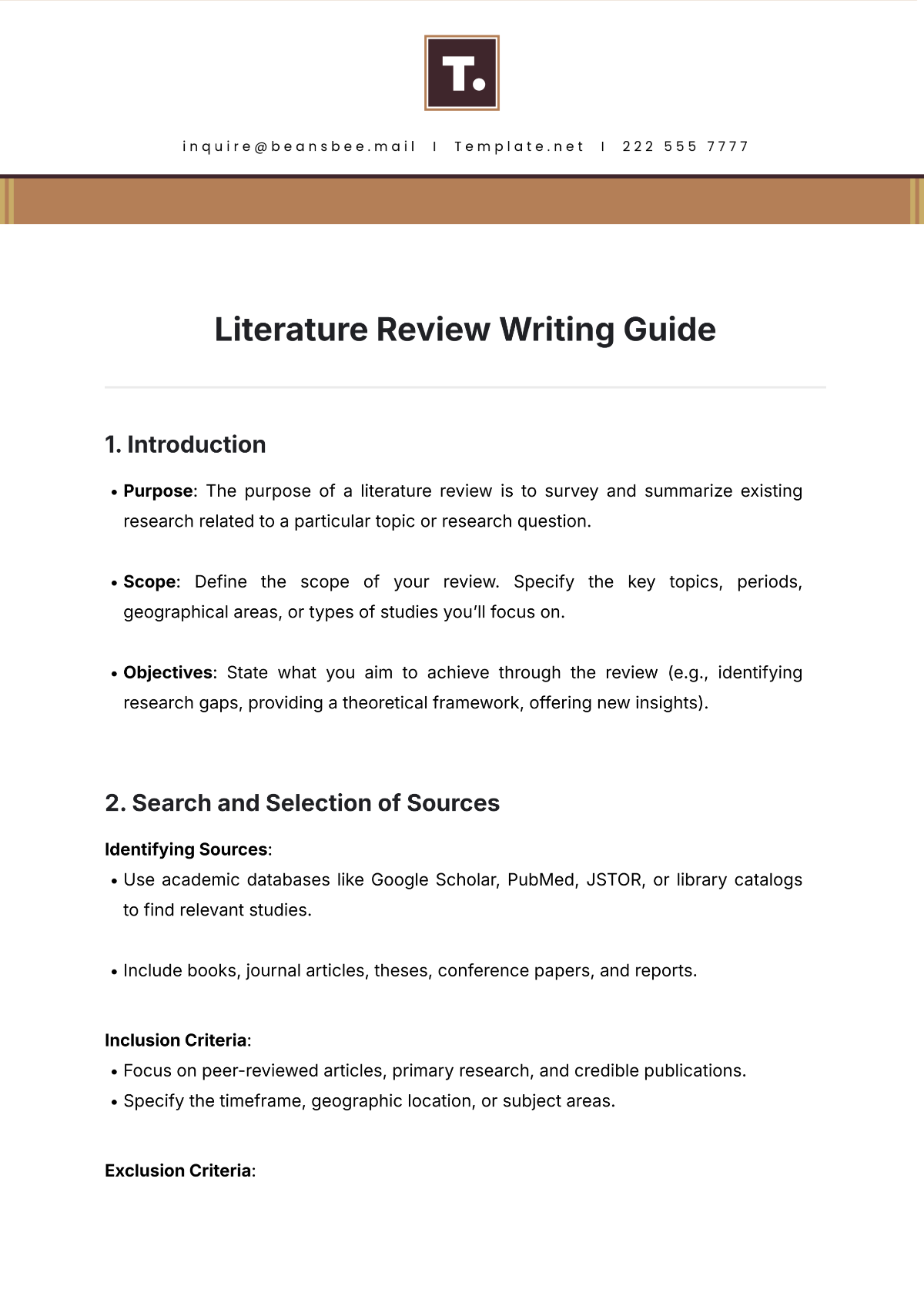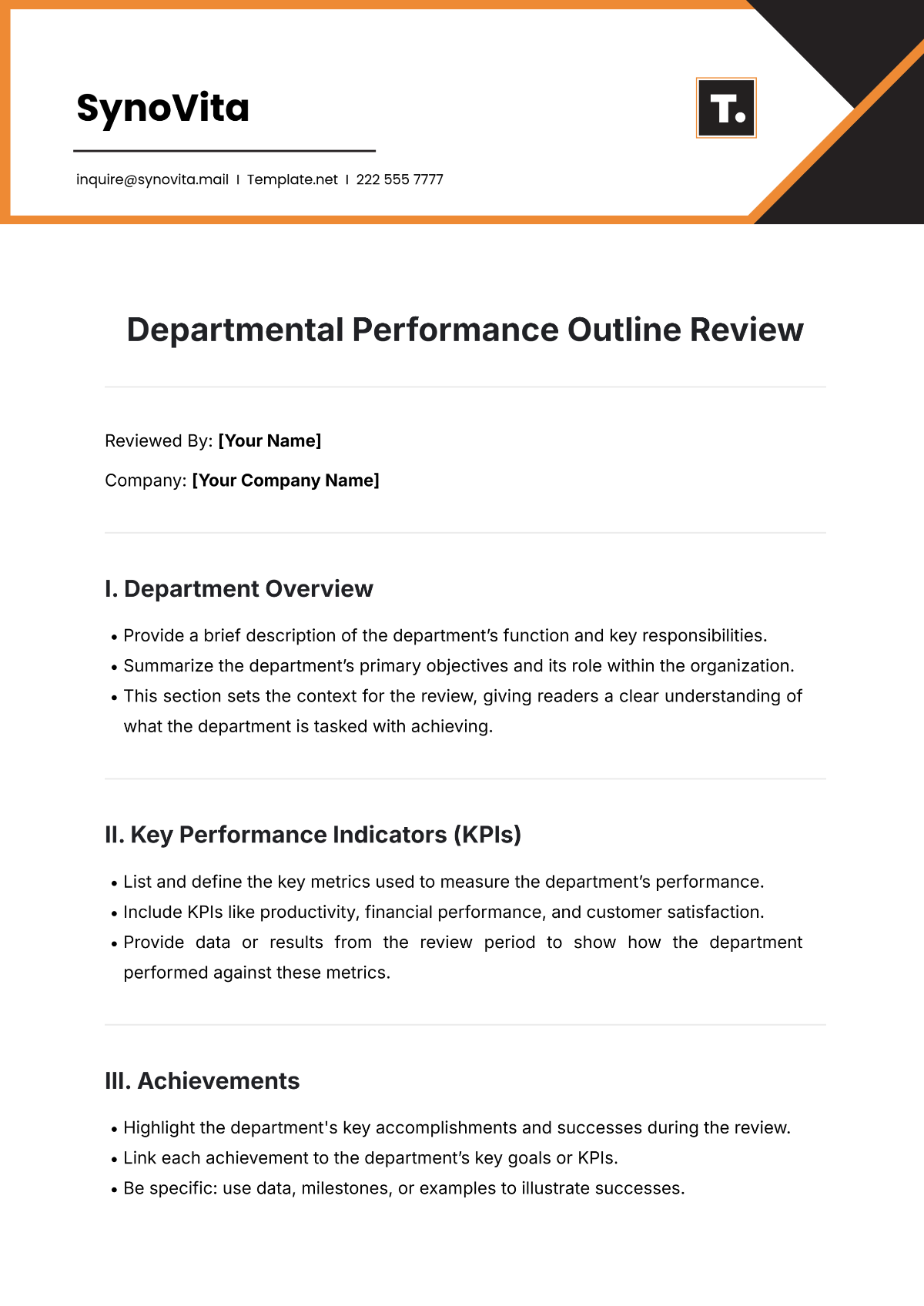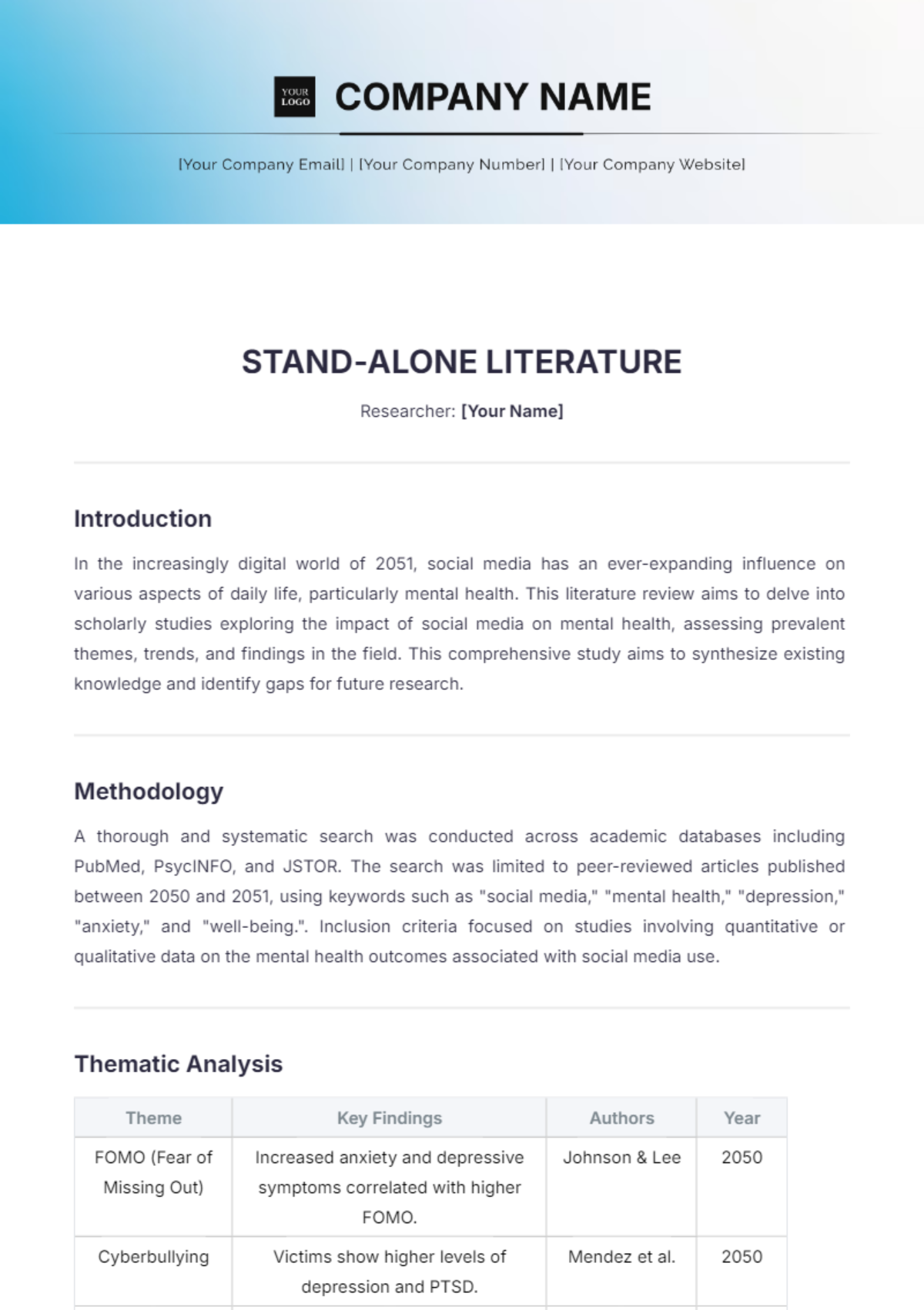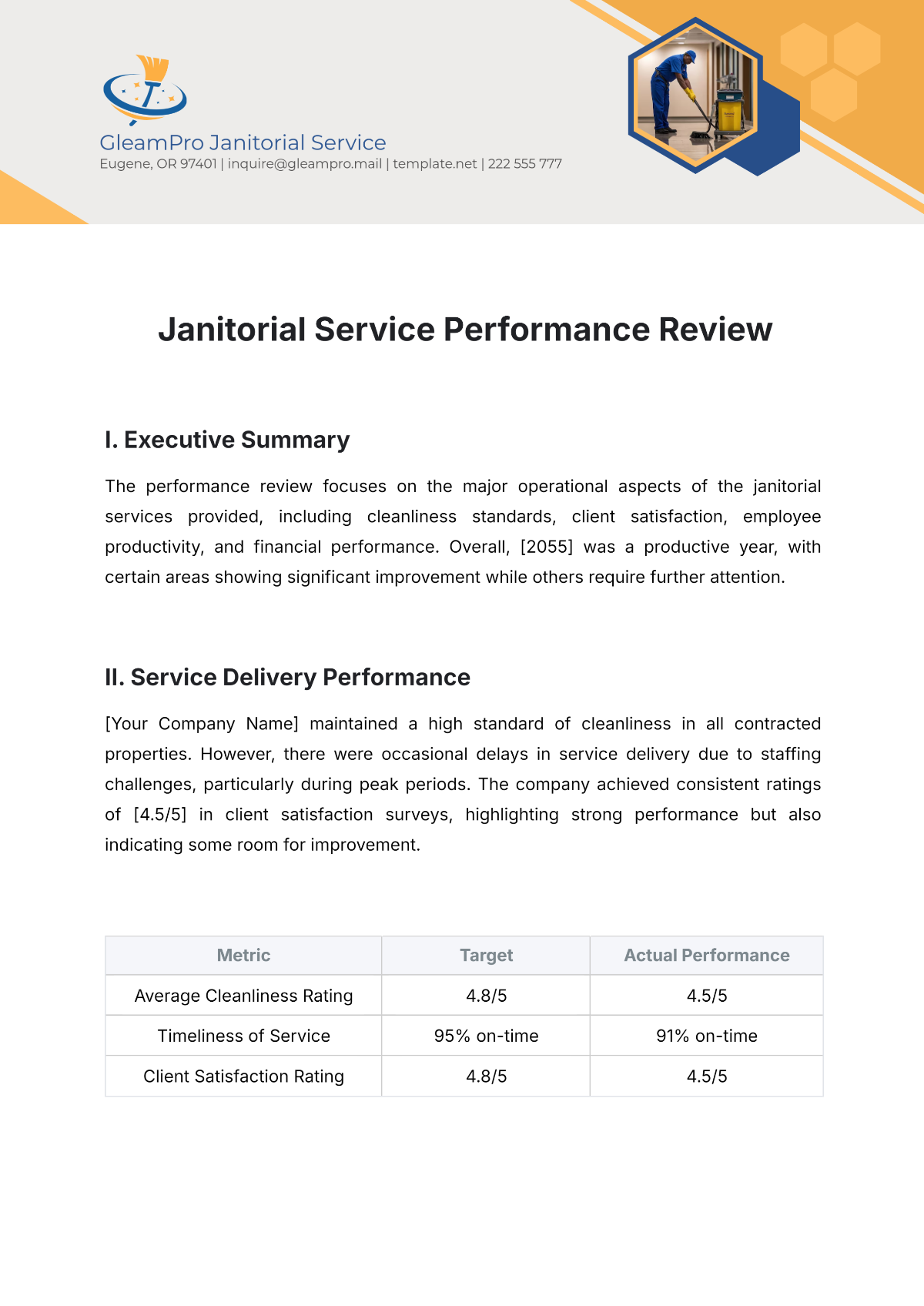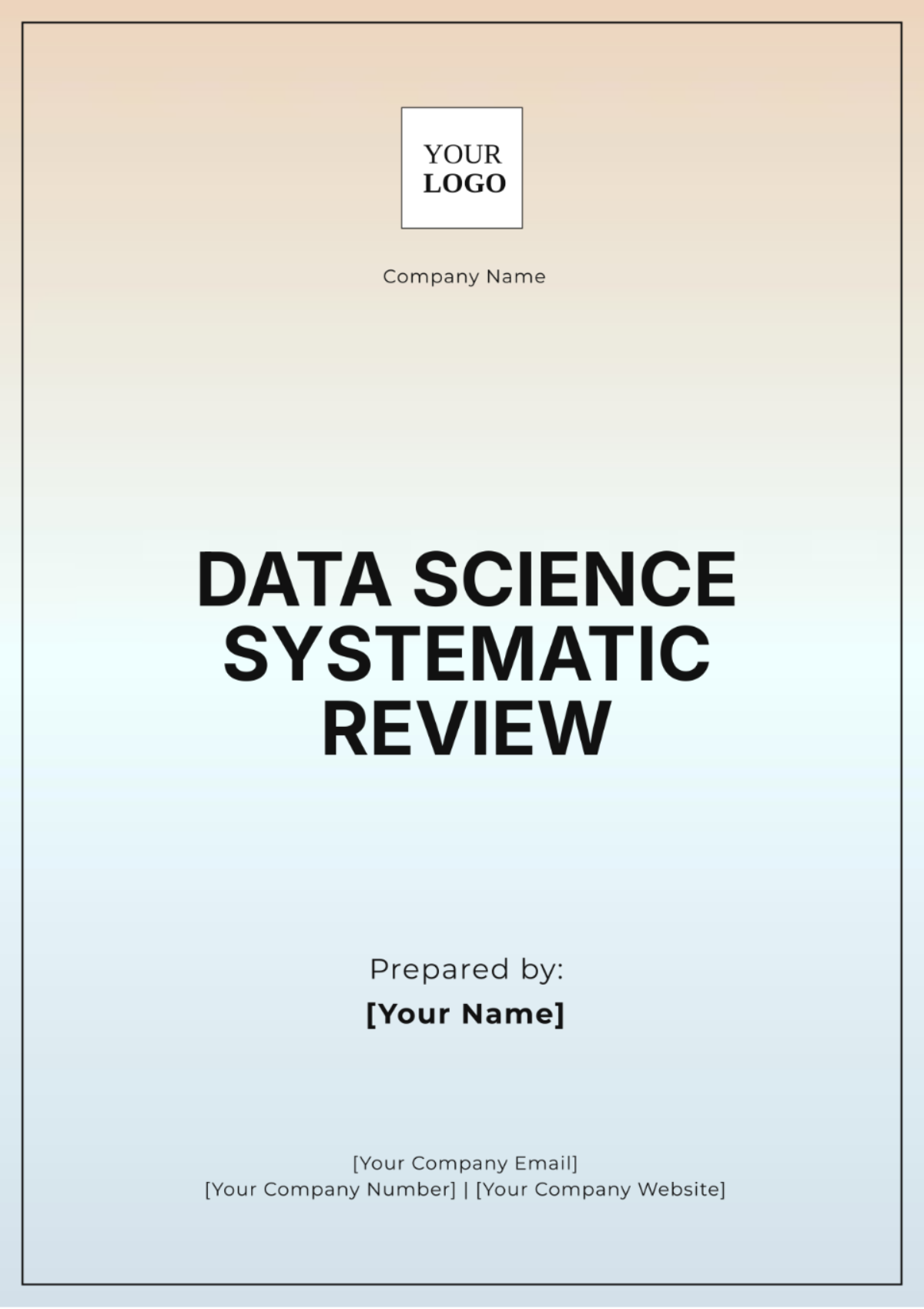Data Science Systematic Review
Prepared by: [YOUR COMPANY NAME]
Date: [DATE]
I. Introduction
Data science has emerged as a pivotal field in various domains, offering solutions that leverage vast amounts of data to derive insights and inform decision-making. This systematic review aims to provide a comprehensive analysis of the current state of research in data science. The purpose is to summarize and evaluate existing findings, identify gaps in the literature, and suggest directions for future research. The primary research questions addressed in this review include:
What are the prevailing themes and trends in data science research?
What methodologies are commonly used in this field?
What are the identified gaps and limitations in current studies?
II. Methodology
The systematic review followed a rigorous process for selecting and analyzing studies. The methodology included:
Search Strategies: Comprehensive searches were conducted in multiple academic databases such as IEEE Xplore, PubMed, and Google Scholar.
Inclusion Criteria: Studies were included if they were published in peer-reviewed journals, focused on data science, and provided empirical findings or significant theoretical contributions. The time frame was limited to the last ten years to capture the most recent advancements.
Selection Process: Identified studies went through a three-stage selection process including title screening, abstract screening, and full-text review to ensure relevance and quality.
III. Results
A. Machine Learning Algorithms
Development and Refinement: Research indicates significant progress in the development and enhancement of machine learning algorithms. This includes improvements in algorithmic efficiency and accuracy.
Applications:
Predictive Analytics: Algorithms are increasingly used to forecast future trends and behaviors based on historical data. For example, advancements in ensemble methods and deep learning techniques are enhancing predictive performance.
Image Recognition: Studies highlight innovations in convolutional neural networks (CNNs) and transfer learning, which have improved the accuracy of image classification and object detection tasks.
Natural Language Processing (NLP): Advances in NLP, including transformer models like BERT and GPT, are enabling more effective text analysis, sentiment analysis, and language generation.
B. Big Data Technologies
Technological Evolution: Research underscores the rapid advancement in big data technologies. Key developments include:
Hadoop: Enhanced capabilities in distributed storage and processing of large datasets. The integration of Hadoop with machine learning frameworks has optimized data handling and analysis.
Spark: Noted for its in-memory processing capabilities, Spark has significantly improved processing speed and efficiency for large-scale data analysis.
Role and Impact: These technologies are crucial for managing and analyzing vast datasets efficiently, reducing processing times, and supporting real-time data analysis.
C. Data Visualization
Importance of Visualization: Effective data visualization techniques are critical for making complex data findings comprehensible. Research emphasizes:
Techniques and Tools: The development of advanced visualization tools and techniques, such as interactive dashboards and dynamic charts, which aid in the exploration and presentation of data.
Communication: Visualizations are essential for translating complex data into intuitive formats that facilitate better understanding and decision-making.
D. Ethical and Privacy Concerns
Ethical Implications: A growing body of literature explores the ethical dimensions of data science, including:
Data Privacy: Concerns about how personal data is collected, stored, and used. Studies emphasize the need for robust privacy measures to protect individuals' data.
Security: Research highlights the importance of securing data against unauthorized access and breaches. There is a focus on developing best practices for data security and compliance with legal regulations.
Frameworks and Guidelines: There is an increasing call for the establishment of ethical frameworks and guidelines to ensure responsible data science practices, addressing issues like consent, data ownership, and fairness.
IV. Discussion
A. Innovation in Machine Learning
Advancements: Continuous development in machine learning algorithms is enhancing predictive analytics and AI capabilities. Key innovations include:
Enhanced Accuracy and Efficiency: Advanced ensemble methods and deep learning architectures (e.g., CNNs for image recognition, and transformer models for NLP) improve prediction accuracy and processing efficiency.
New Applications: These advancements are driving new applications in healthcare (disease prediction), finance (fraud detection), and marketing (customer segmentation).
Implications: Progress in machine learning is pushing AI boundaries, leading to industry breakthroughs and further research opportunities.
B. Challenges in Big Data
Data Management Issues: Despite improvements in big data technologies like Hadoop and Spark, challenges persist:
Scalability: Scaling solutions for growing data volumes remains difficult.
Integration and Processing: Efficiently integrating data sources and real-time processing is complex.
Implications: Addressing these issues is essential for effective big data utilization. More advanced tools and methodologies are needed for large-scale data management.
C. Need for Ethical Frameworks
Ethical Concerns: There is a pressing need for robust ethical frameworks to guide data science:
Data Privacy: Protecting personal data and ensuring compliance with privacy regulations is crucial.
Data Security: Preventing breaches and unauthorized access is vital.
Framework Development: Developing ethical guidelines for data handling, consent, and transparency is necessary to ensure responsible data use.
D. Limitations of the Current Review
Potential Publication Bias: The review may be influenced by publication bias, which could skew findings.
Exclusion of Non-Peer-Reviewed Literature: Valuable insights from non-peer-reviewed sources may be missing.
Implications: Recognizing these limitations is important for accurate interpretation. Future reviews should include a wider range of sources and address potential biases for a more comprehensive perspective.
V. Conclusion
This comprehensive review underscores major trends and recent advancements in data science, pinpointing essential areas for further research. Key findings indicate continuous progress in machine learning, highlighting its evolution and improvements. Moreover, it examines the evolving landscape of big data technologies, elucidating the changes and developments. The review also emphasizes the increasing significance of ethical considerations in the field, urging future studies to tackle the critical challenges posed by big data and to refine ethical guidelines for the discipline.
VI. References
Smith, J., & Zhang, L. (2052). Advancements in Machine Learning Algorithms: A Review of New Architectures and Their Applications. Journal of Data Science Innovations, 8(2), 134-150.
Lee, K., & Patel, R. (2054). Big Data Technologies and Their Evolution: Challenges and Opportunities. International Journal of Big Data Research, 11(3), 45-62.
Garcia, M., & Thompson, E. (2056). Ethical Frameworks in Data Science: Addressing Privacy and Security Concerns. Data Ethics and Governance Review, 5(1), 88-104.




